Student Blog
Classes

Choosing Your Area of Practice ⟩
February 10, 2017, by Erwin
Classes What are OS/OT?
Many students come into the program expecting to practice in a specific area. And if you’re like 90% of most prospective occupational therapy students, it’d be a safe guess that you want to work in pediatrics. That was definitely me when I was applying to occupational therapy schools. I was so gung-ho about working with children; I did all my volunteer hours in a pediatric clinic and also worked with children with special needs. I was all-in on working with pediatrics . . . that is until I went to USC.
A misconception that some students have is that the program will train you to be an occupational therapists in a specific area of interest. However, that is not the case. USC, and all other occupational therapy programs, train you as a generalist. Thus, when you graduate, you are qualified to work in any area of occupational therapy. Here at USC, we have 3 practice immersions to assist students in developing mastery over the various domains of OT. Those immersions are adult rehabilitation, mental health, and pediatrics. It’s awesome because you get exposed to other areas of occupational therapy that you would have never thought you’d be interested in. In fact, the majority of students actually come into the program wanting to practice in one area, and end up loving something else by graduation!
While I thought I wanted to work in pediatrics when I started the program, today, I’m torn between adult rehabilitation and working in adolescent mental health. I enjoy the pace and the work that is done in physical rehabilitation, but I also enjoy the connections I made with clients during my fieldwork in adolescent mental health. It’s funny because I was so intimidated of both areas before entering the program, but now I can’t see myself doing anything else! Occupational therapy is such a wonderful and diverse profession that sometimes it’s hard to choose one area to work in. But on the flip-side, if you ever feel tired of working in one area, you can always mix it up and enter another area of practice!
⋯

A visit to a OS minor course! ⟩
January 25, 2017, by Alyssa
Classes What are OS/OT?
Last week, I had the chance to visit Dr. Olga Solomon’s Occupational Science (OS) minor course: Occupational Foundations of Human-Animal Interaction! During my visit, I was able to learn how interacting with an animal can benefit your overall health and wellness. I mean . . . who would have thought that some quality time with a cute creature can boost your social-emotional, physiological, and physical well-being?! In addition to learning more about animal-assisted therapy, I also had the opportunity to meet Dr. Catherine Dorr, the executive director of Assistance Dogs International and an occupational therapist OTD, OTR/L who facilitates canine interventions within her clinical practice. During this classroom visit, I met Ford, who is pictured below with me. Dr. Dorr shared her experiences with working with Ford and her passion for training other canines to serve as facility dogs.
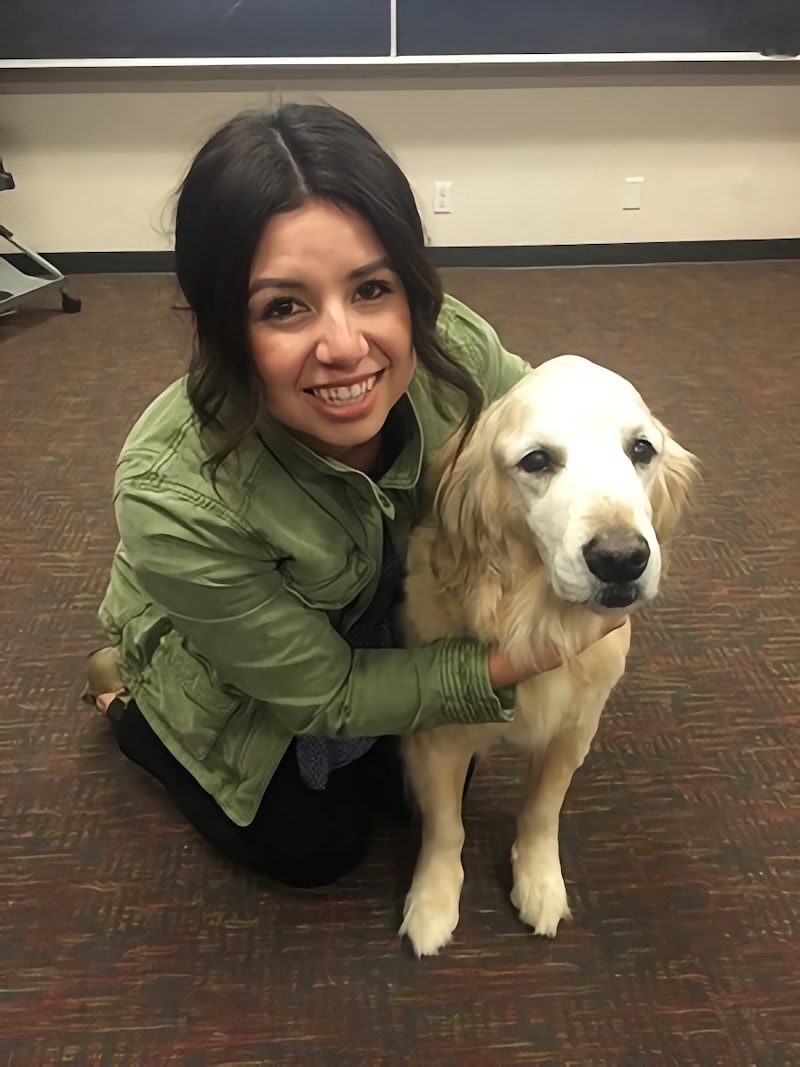
The famous Ford himself!
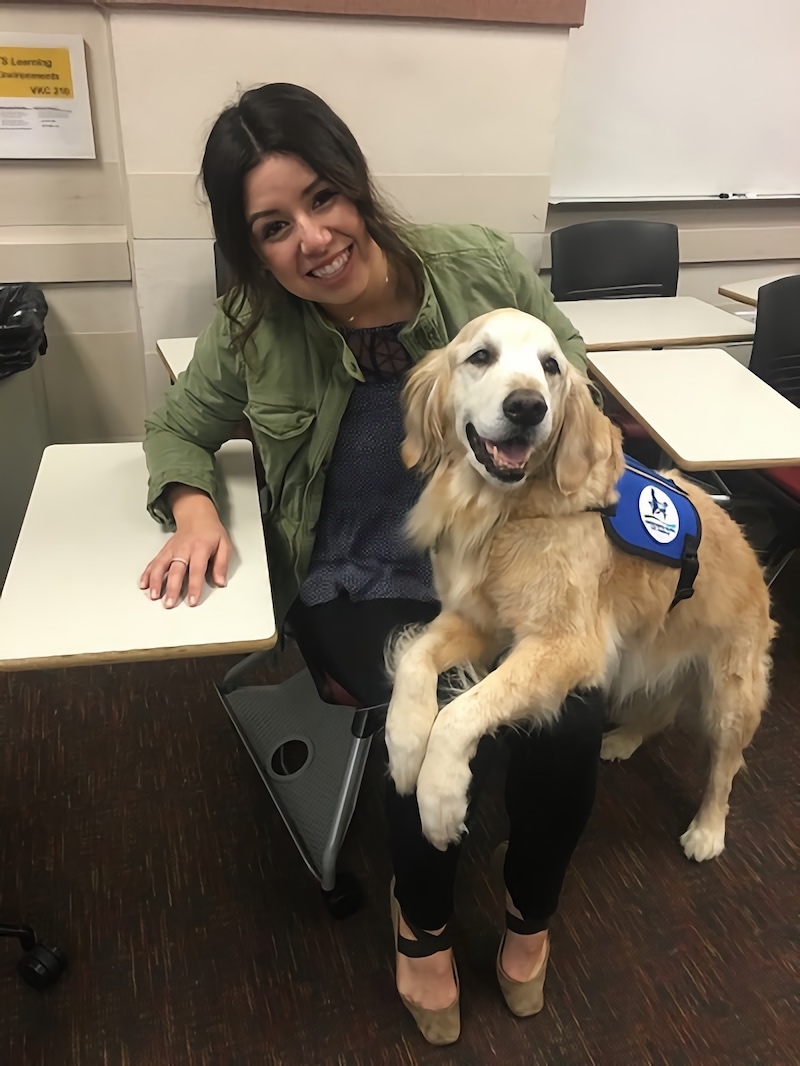
Ford and I posing for our close-up!
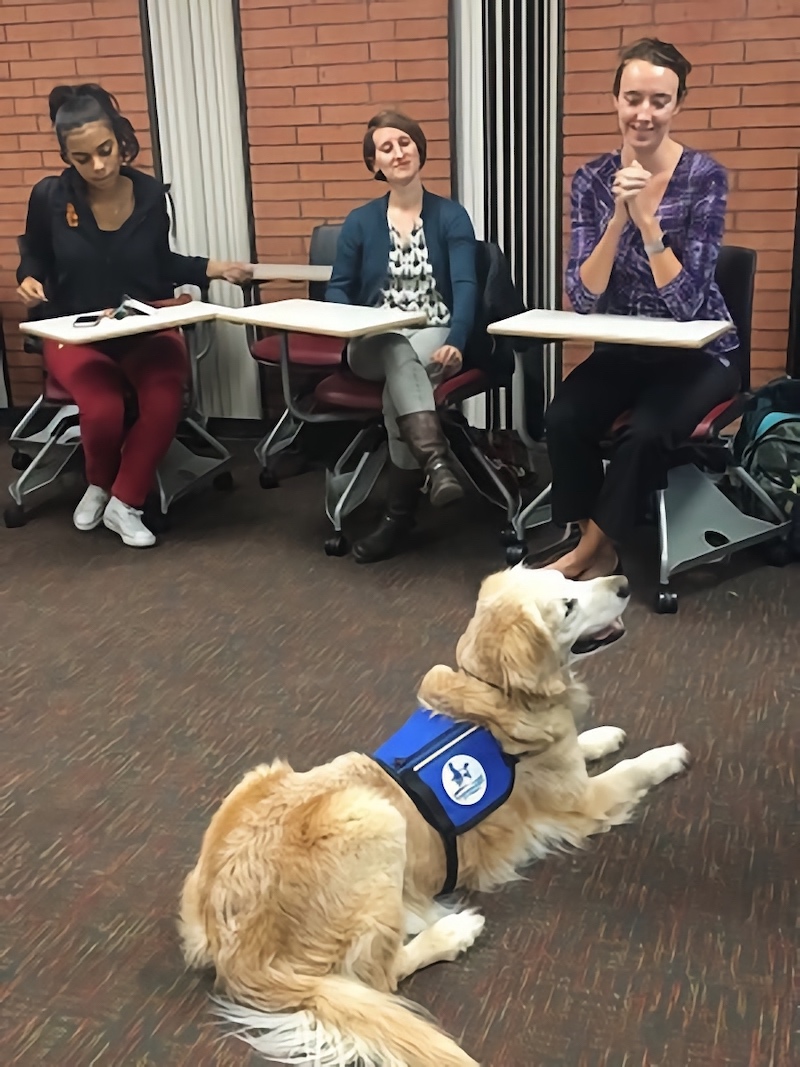
USC undergraduate students and Ford
In addition, the Office for Wellness and Health Promotion (OWHP) at USC has introduced its newest member, Professor Beau. Professor Beau is unlike other canines; he is the first, full-time wellness dog that USC has ever had! Fight on!
⋯

New Year, New Courses ⟩
January 17, 2017, by Jessica
Classes
Happy New Year, everyone! 2017 is a big one — last semester of OT school, graduation, last fieldwork experience, taking the boards (and passing hopefully), finding a job (hopefully), and getting married! AH!
This semester is an exciting one since we’ve finished our immersion courses, and can now take electives. This is something unique to USC, since other OT schools don’t necessarily give students the option to take electives in the practice area they are most interested in. For me, I’m most interested in pediatrics, so I geared all my electives towards that. There are so many electives to choose from, so no matter what you’re interested in, you’ll find something to fit your interests.
Here’s a peek at my schedule this semester:
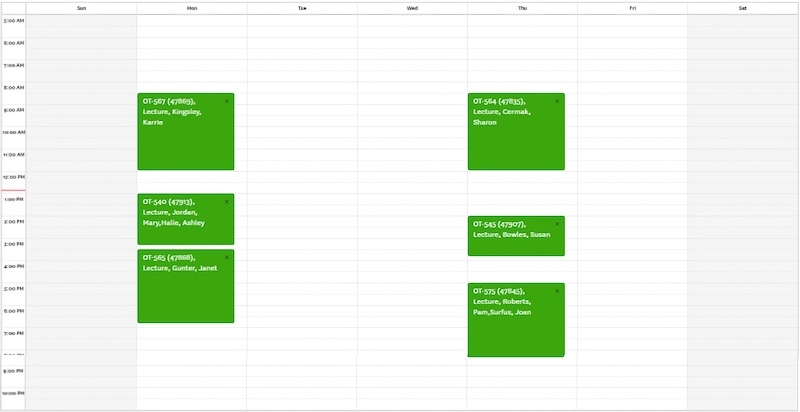
It just so happens that all of the classes I decided to take fell on only Monday and Thursday. This worked out well for me since I also work part-time, giving me three weekdays to work.
Here’s the courses I’m taking this semester:
OT 567: Contemporary Issues: Occupational Therapy in Early Intervention
OT 540: Leadership Capstone
OT 565: Sensory Integration Interventions
OT 564: Sensory Integration
OT 545: Advanced Seminar in Occupational Science
OT 575: Dysphagia Across the Lifespan: Pediatrics through Geriatrics
The electives I chose are in bold, and the other two courses are required for all students. Check out our course descriptions for more detail about all of our electives and other courses in the program.
Looking forward to sharing all the exciting things happening in my last semester with you all!
⋯

Hello 2017 and Hello Spring Semester! ⟩
January 13, 2017, by Raisa
Classes What are OS/OT?
Happy New Year everyone! I hope everybody had a wonderful end to 2016 and a positive start to 2017. The start of the New Year also marks the start of the spring semester, which means new courses and my last semester in the Post-Professional Master’s program.
I am stoked for the spring semester as I will be diving right into my practice area of interest, which is Adult Rehabilitation! Find out more about the USC OSOT courses.
Let me give you a breakdown of the electives I will be taking this semester:
- OT574 Enhancing Motor Control: This class provides an in-depth understanding of the role of OT, the domain of practice and occupation-based approach to adult rehabilitation in upper motor neuron syndromes. In this hands-on laboratory class, students will be able to interact with clients and clinicians for an integrated learning experience of both theory and application in the different approaches relating to Neurorehabilitation.
- OT573 Hand Rehabilitation: Students will be able to build a good foundation of the anatomy and physiology of the forearm, wrist, and hand; incorporating the science and the art of occupation into developing your clinical reasoning skills for occupation-based evaluation and treatment for common hand disorders.
- OT575 Dysphagia across the Lifespan, Pediatricts to Geriatrics: This course will give students a better understanding of the role of OT in the management of dysphagia cases from pediatric to geriatric populations. The class will focus on the OTs domain of practice, which will equip students with a firm foundation in the comprehension and treatment of swallowing disorders.
- OT577 Seminar in Occupational Therapy: This class provides students with an overview of the role and domain of practice of occupational therapy in different clinical settings and contexts. Seminar and class discussions will be done in order to integrate both theory and clinical practice in various healthcare settings.
USC offers a variety of electives which will equip you with the skills you need to become a well-rounded practitioner. Evidence-based practice (EBP) is also a common foundation that all these courses are built on, your future self will thank you for keeping up to date with the latest EBP trends. Some of these courses even go towards a completion of specialization or certification in your future practice.
I hope to grow as an Occupational Therapist with the help of the esteemed USC OSOT faculty and my Trojan Family. I look forward to this semester, and I wish everyone the best of luck in their endeavors! What electives would you want to take in the USC OSOT division? Shoot me an email, I’d love to hear from you!
Fight on!
Raisa
⋯

The End of the Fall Semester ⟩
December 12, 2016, by Raisa
Classes School/Life Balance
I cannot believe it is the end of the fall semester. It feels just like yesterday that I flew in from the Philippines to pursue my masters degree. The last 5 months feel like a surreal blur, but nonetheless, I am happy and ecstatic to be moving forward in the spring! This semester has been nothing short of amazing. I will not lie, it was difficult but it was definitely worth it.
Through the efforts of our supportive faculty, the program was both challenging and rewarding. The program certainly does live up to its name and I am excited to see what the spring semester has in store for me.
Let me leave you with some pictures of the MA-1 class and our professors on our final classes. With the holidays fast approaching I hope that everyone gets their well-needed rest, enjoy the time you have with friends and family. See you in the spring!
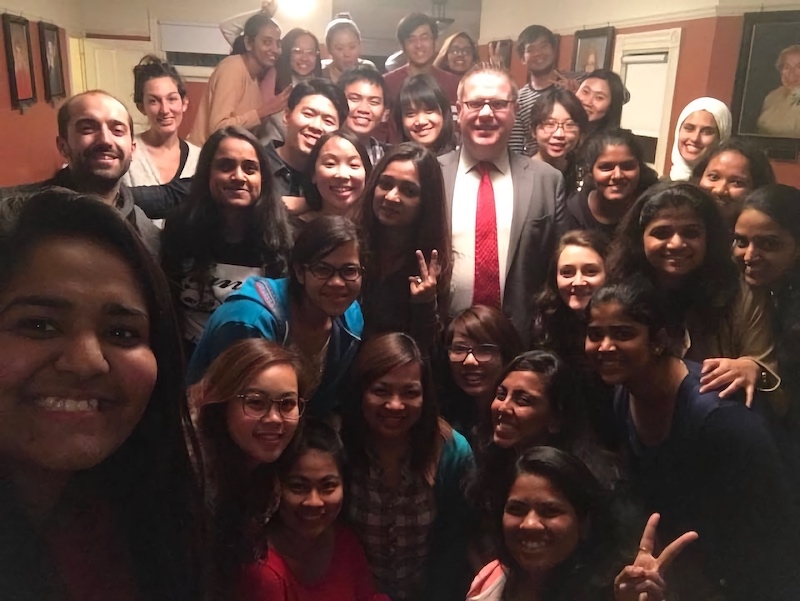
Our last class for OT518: Quantitative Research with professor Shawn Phipps PhD, OTR/L, FAOTA
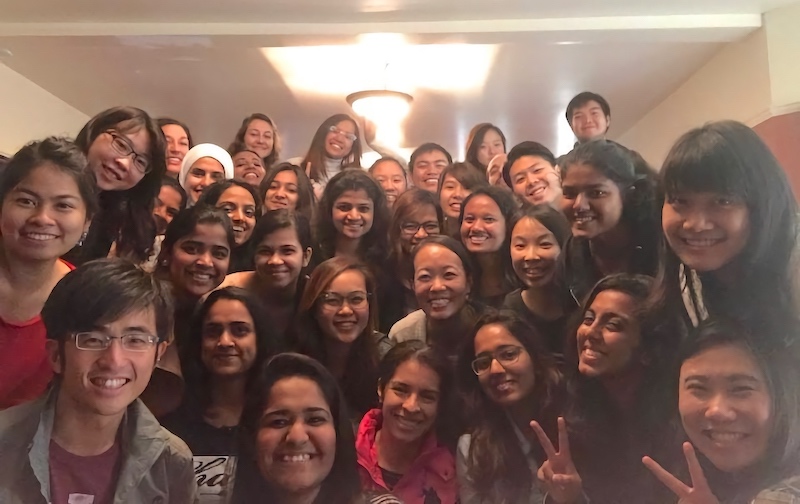
Our semester ending class on OT515: Neuroscience of Behavior with professor Sook-Lei Liew PhD, OTR/L
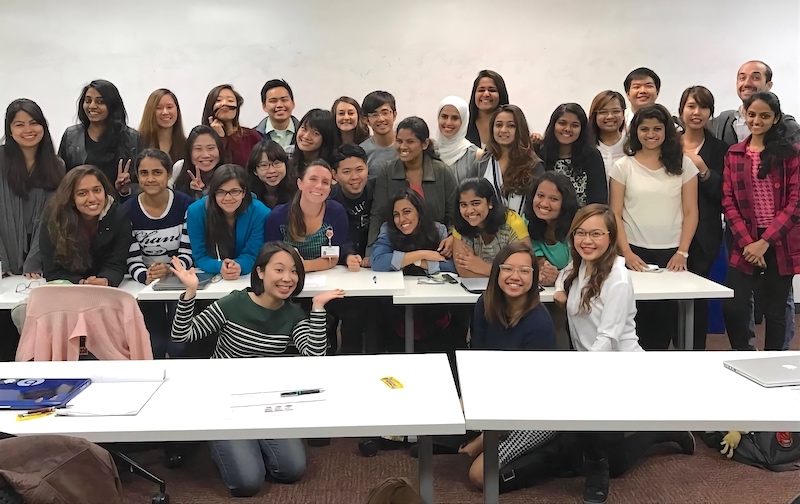
Our final class for OT538 Current Issues in Practice: Adulthood and Aging with Stacey Schepens Niemiec PhD, OTR/L

Final class for OT 534: Health Promotion and Wellness with Camille Dieterle OTD, OTR/L
Happy Holidays everyone!
Fight on!
⋯





